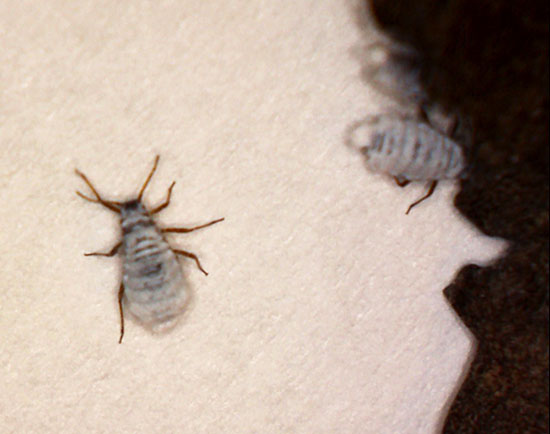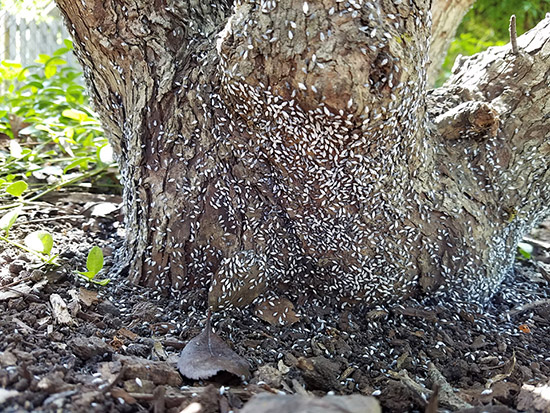Issue 15, September 7, 2016
Woolly Aphids
Woolly aphids typically feed on two hosts during a 1-year period, with most species apparently having to switch hosts. This host-switching occurs in various species from late June to late July, and fuzzy adult females that look like flying lint seemingly drifting on the wind are their means of getting to the other host.
Once reaching their summer host, they feed and give birth to additional wingless generations of females, producing winged individuals that fly back to the other host in the fall to lay eggs. These eggs hatch in the spring into females that give birth to more wingless generations of females, producing the winged females that switch hosts.
There are several species of woolly aphids in Illinois. The woolly apple aphid feeds in the spring on apple, pear, hawthorn, and mountainash leaves and then moves to elm leaves for the summer. Woolly elm aphid feeds on elm leaves in spring and then moves to serviceberry, where it feeds on the roots for the summer. Woolly alder aphid feeds on alder and then silver maple.
There are also the hawthorn woolly aphid, woolly elm bark aphid, beech blight aphid, Prociphilus tessellatus (ash host), and Prociphilus corrugatans (serviceberry host) that do not apparently switch hosts. Many woolly aphid species live as nymphs and wingless females on the leaves and twigs as well as on the roots of the same host at the same time. For reasons not well understood, they will migrate from the roots to the stems and vice versa.
The attached photos were taken by an arborist after spraying a hawthorn. There were large numbers of woolly aphids on the leaves, of which many fell to the ground when the tree was sprayed with an insecticide. A few days later, large numbers of woolly aphids were seen on the trunk base. These are probably root-feeding woolly aphids migrating to the above-ground growth of the tree. This migration might have been triggered by the canopy insecticide application but was probably just coincidence. Assuming that the woolly aphids on the leaves and trunk are the same species, this is probably hawthorn woolly aphid. Thank to Craig Casino of Tree Green for sharing the information and photos.

Woolly aphid on hawthorn.

Woolly aphids on hawthorn.
These insects are more curiosities than pests. Occasionally, a host will experience enough leaf curling and honeydew production to warrant aesthetic control, and woolly elm aphid can damage serviceberry roots. Many insecticides are effective against them while on leaves, including many pyrethroids, imidacloprid, and insecticidal soap. The woolly elm aphid can be controlled on elm leaves to reduce serviceberry root damage later. (Phil Nixon)
Author:
Phil Nixon